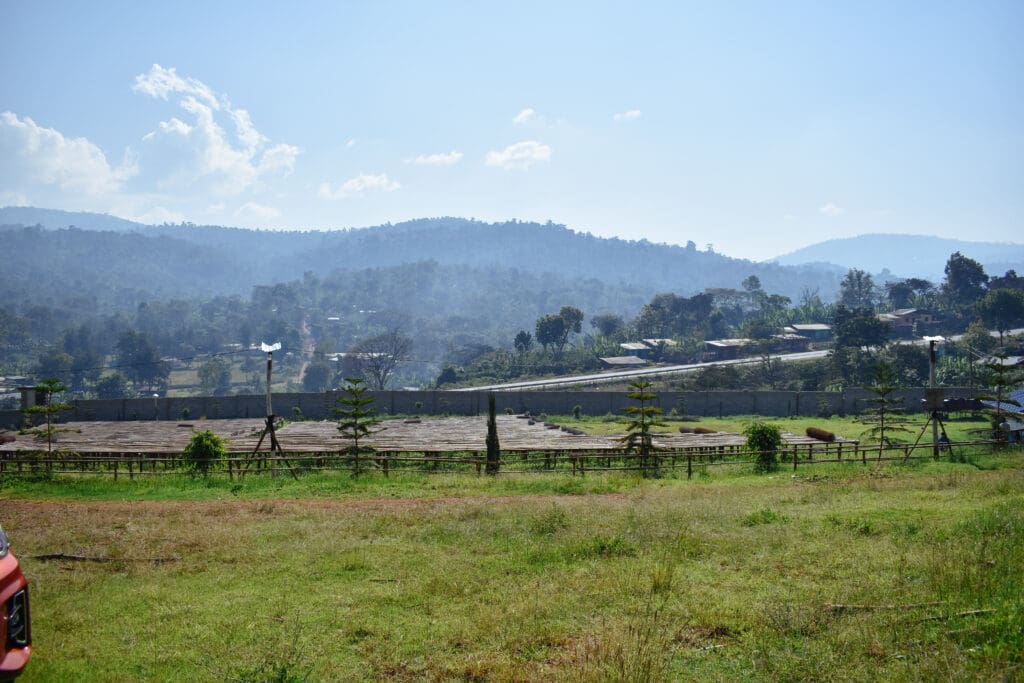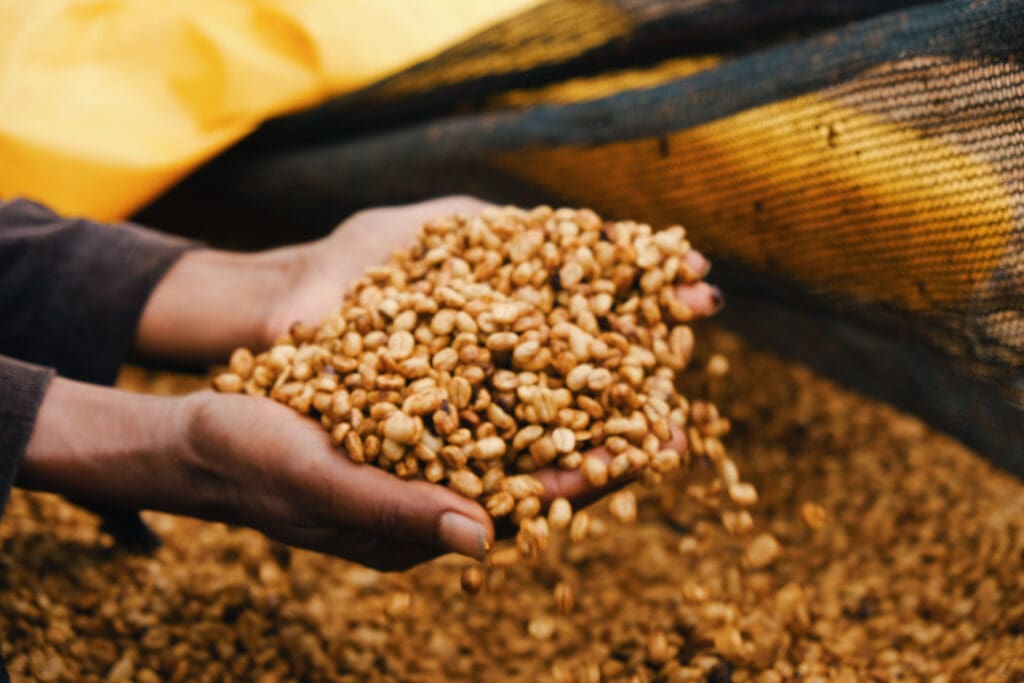This coffee from the Gerse kebele in the Yirgacheffe growing area undergoes a Black Honey process. The first step post-harvesting involves quick hand sorting to ensure consistency in coloration. The cherries are then placed in float tanks, where lower-density cherries are skimmed off for lower grade coffees or local consumption. Higher-density cherries sink to the bottom and are selected for further processing.
Another hand sorting ensures uniformity before pulping. The disc pulper is calibrated for greater control and speed, minimizing damage while retaining maximum mucilage content. After pulping, the parchment undergoes a short fermentation period.
The mucilage-heavy coffee is then moved to shaded drying beds, where they are slowly dried under a shade canopy with adequate airflow. This process adds 4 to 5 days to overall drying time, ensuring stable moisture distribution and achieving dialed-in water activity. Careful timing in covering the parchment is essential to achieve uniformity, producing high-quality honey processed coffees.
The color names such as Black, Red, and White Honey refer to the color or amount o mucilage left on the coffee. Black Honey coffees exhibit characteristic black splotches due to the heavy mucilage coverage, while Red Honeys have fewer splotches, which are more red than black. White Honey coffees have the least mucilage and appear more yellow/white in hue overall.
This coffee comes to us through ZEM Coffee, a vertically integrated coffee company founded by Ethiopian and American trio Zele, Emily, and Michael. Their partnership began in 2013 and has evolved through various ventures, including Catalyst Trade, which scaled as an Ethiopian coffee importer from 2018 to 2023. ZEM Coffee now operates with a small team in Kansas City and specialized teams in Ethiopia and Peru. Their focus is on quality coffee and intimate, sustainable partnerships in the coffee industry.



